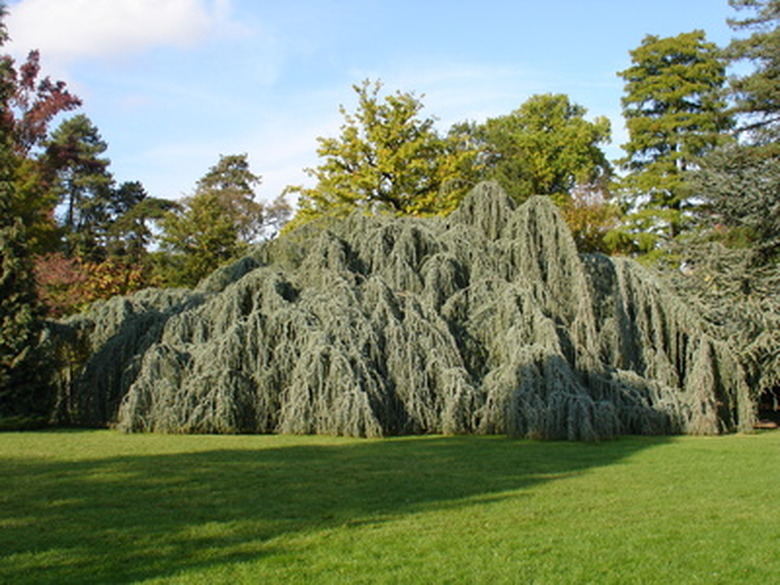How Do Cedar Trees Reproduce?
Americans commonly call their native juniper trees "cedars," but true cedars belong to the botanical genus Cedrus, and include famous trees such as the cedar-of-Lebanon (Cedrus libanii), deodar cedar (Cedrus deodora) and the Atlas cedar (Cedrus atlantica). All are native to the western Himalayas or the Mediterranean and become tall, elegantly branched trees. You can see variously aged cones on the trees any time of year.
Function
Although cedars are not flowering plants, they produce gendered reproductive organs called "cones." Thus, they are called "conifers." Insects often play a role in pollinating petalled flowers, but in the case of cedars, winds facilitate the pollination of cones that results in production of seeds. Both male and female cones occur, but only the female cones yield seeds.
- Americans commonly call their native juniper trees "cedars," but true cedars belong to the botanical genus Cedrus, and include famous trees such as the cedar-of-Lebanon (Cedrus libanii), deodar cedar (Cedrus deodora) and the Atlas cedar (Cedrus atlantica).
Timing
Cedar trees produce their new cones in late summer on short shoots at the tips of branches. Both male and female cones are found on the same plant but in different locations. Male cones are seen in profusion most heavily at branch tips in the lower tree branches, whereas female cones are found in the upper branches near the tree's tip.
Pollination
Although both new male and female cones present themselves in late summer, the male cones release their pollen in early autumn. The numerous male cones are erect, cylinder-like in shape and light brown, about 2 to 3 inches in length; they shed golden yellow pollen onto the wind. The female cones in the upper branches are receptive and are pollinated when pollen lands on their scales. Female cones also are erect but look more plump and barrel-like than male cones and are green in color, about 4 to 5-inches in size.
- Cedar trees produce their new cones in late summer on short shoots at the tips of branches.
- The female cones in the upper branches are receptive and are pollinated when pollen lands on their scales.
Cone Maturation
After pollen is shed, the many male cones disintegrate and fall from the branches before winter. The female cones persist for two to three years, slowly maturing. As the female cones age, their color changes from green to purplish olive and finally to brown. On a single tree, you can see variously aged female cones based on their color.
Seed Dispersal
In the second year after pollination, the female cones are fully brown and ripened with seeds. The cones split open and break apart, releasing seeds that drop to the ground or are carried slightly by the wind. Each seed is brown and an abstract triangle in shape. It is sticky with some resin and has a "wing" that allows the wind to carry it farther from the mother tree.
- After pollen is shed, the many male cones disintegrate and fall from the branches before winter.
